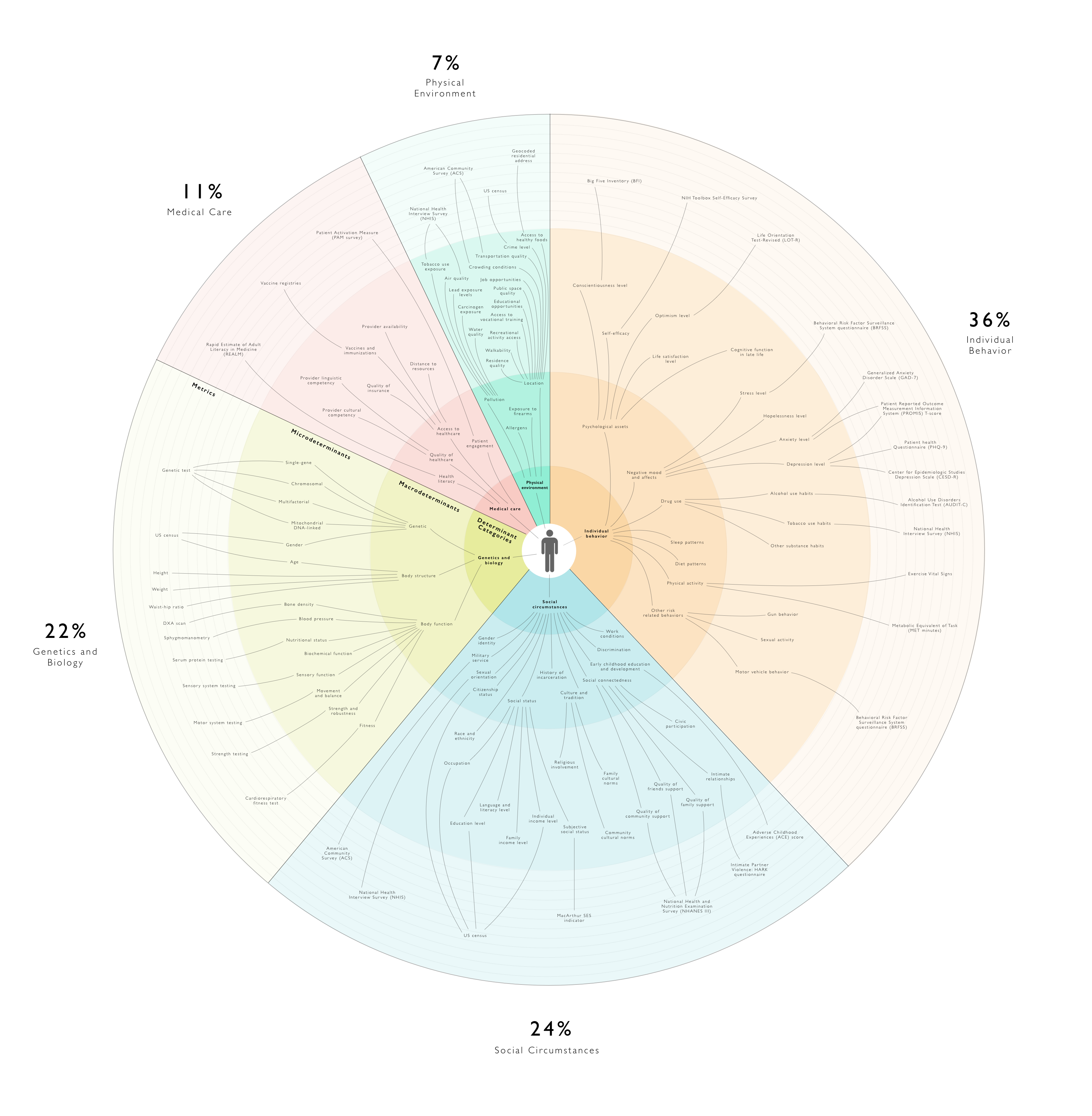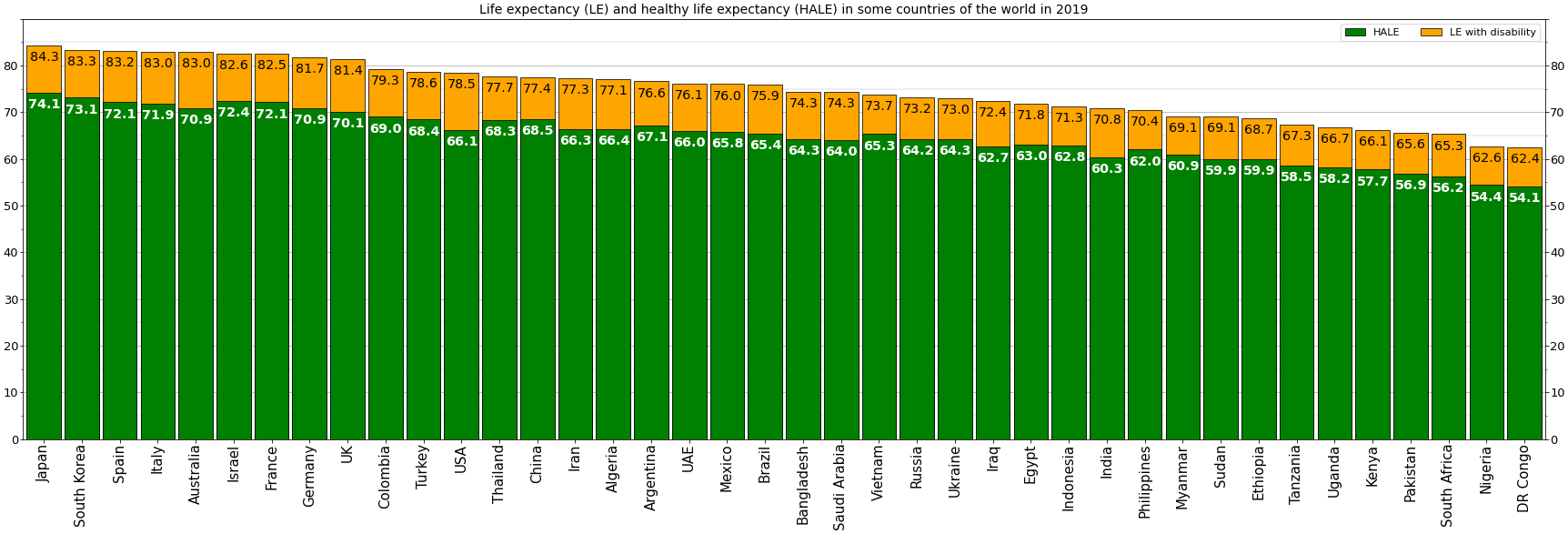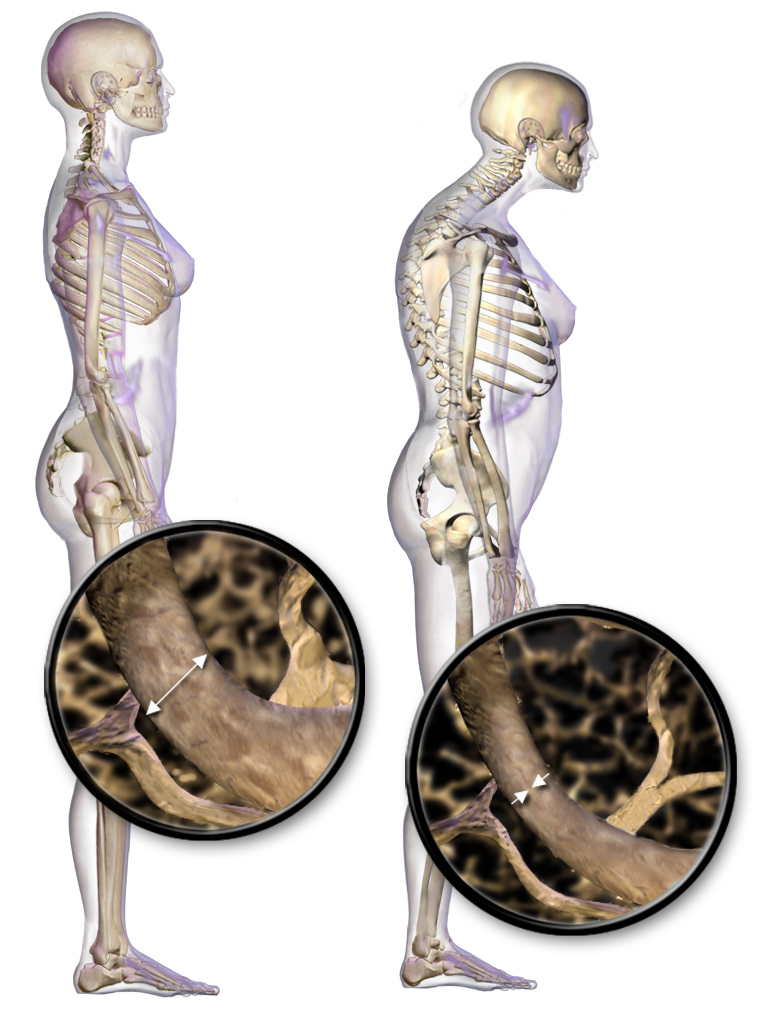|
Women's Health
Women's health is an example of population health, where health is defined by the World Health Organization (WHO) as "a state of complete physical, mental and social well-being and not merely the absence of disease or infirmity". Often treated as simply women's reproductive health, many groups argue for a broader definition pertaining to the overall health of women, better expressed as "The health of women". These differences are further exacerbated in developing countries where women, whose health includes both their risks and experiences, are further disadvantaged. While the rates of the leading causes of death, cardiovascular disease, cancer and lung disease, are similar in women and men, women have different experiences. Lung cancer has overtaken all other types of cancer as the leading cause of cancer related death in women, followed by breast cancer, colorectal, ovarian, uterine and cervical cancers. While smoking is the major cause of lung cancer, amongst nonsmoking ... [...More Info...] [...Related Items...] OR: [Wikipedia] [Google] [Baidu] |
Population Health
Population health has been defined as "the health outcomes of a group of individuals, including the distribution of such outcomes within the group". It is an approach to health that aims to improve the health of an entire human population. It has been described as consisting of three components. These are "health outcomes, patterns of health determinants, and policies and interventions". A priority considered important in achieving the aim of population health is to reduce health inequities or disparities among different population groups due to, among other factors, the social determinants of health (SDOH). The SDOH include all the factors (social, environmental, cultural and physical) that the different populations are born into, grow up, and function with throughout their lifetimes which potentially have a measurable impact on the health of human populations. The population health concept represents a change in the focus from the individual-level, characteristic of most main ... [...More Info...] [...Related Items...] OR: [Wikipedia] [Google] [Baidu] |
HPV Vaccine
Human papillomavirus (HPV) vaccines are vaccines intended to provide acquired immunity against infection by certain types of human papillomavirus. The first HPV vaccine became available in 2006. Currently there are six licensed HPV vaccines: three bivalent (protect against two types of HPV), two quadrivalent (against four), and one nonavalent vaccine (against nine) All have excellent safety profiles and are highly efficacious, or have met immunobridging standards. All of them protect against HPV types 16 and 18, which are together responsible for approximately 70% of cervical cancer cases globally. The quadrivalent vaccines provide additional protection against HPV types 6 and 11. The nonavalent provides additional protection against HPV types 31, 33, 45, 52 and 58. It is estimated that HPV vaccines may prevent 70% of cervical cancer, 80% of anal cancer, 60% of vaginal cancer, 40% of vulvar cancer, and show more than 90% effectiveness in preventing HPV-positive orophary ... [...More Info...] [...Related Items...] OR: [Wikipedia] [Google] [Baidu] |
Pregnancy
Pregnancy is the time during which one or more offspring gestation, gestates inside a woman's uterus. A multiple birth, multiple pregnancy involves more than one offspring, such as with twins. Conception (biology), Conception usually occurs following sexual intercourse, vaginal intercourse, but can also occur through assisted reproductive technology procedures. A pregnancy may end in a Live birth (human), live birth, a miscarriage, an Abortion#Induced, induced abortion, or a stillbirth. Childbirth typically occurs around 40 weeks from the start of the Menstruation#Onset and frequency, last menstrual period (LMP), a span known as the Gestational age (obstetrics), ''gestational age''; this is just over nine months. Counting by Human fertilization#Fertilization age, ''fertilization age'', the length is about 38 weeks. Implantation (embryology), Implantation occurs on average 8–9 days after Human fertilization, fertilization. An ''embryo'' is the term for the deve ... [...More Info...] [...Related Items...] OR: [Wikipedia] [Google] [Baidu] |
Developed Countries
A developed country, or advanced country, is a sovereign state that has a high quality of life, developed economy, and advanced technological infrastructure relative to other less industrialized nations. Most commonly, the criteria for evaluating the degree of economic development are the gross domestic product (GDP), gross national product (GNP), the per capita income, level of industrialization, amount of widespread infrastructure and general standard of living. Which criteria are to be used and which countries can be classified as being developed are subjects of debate. Different definitions of developed countries are provided by the International Monetary Fund and the World Bank; moreover, HDI ranking is used to reflect the composite index of life expectancy, education, and income per capita. In 2025, 40 countries fit all three criteria, while an additional 21 countries fit two out of three. Developed countries have generally more advanced post-industrial economies, ... [...More Info...] [...Related Items...] OR: [Wikipedia] [Google] [Baidu] |
Sexual And Reproductive Health
Sexual and reproductive health (SRH) is a field of research, health care, and social activism that explores the health of an individual's reproductive system and sexual well-being during all stages of their life. Sexual and reproductive health is more commonly defined as sexual and reproductive health and rights, to encompass individual agency to make choices about their sexual and reproductive lives. The term can also be further defined more broadly within the framework of the World Health Organization's (WHO) definition of health―as "a state of complete physical, mental and social well-being, and not merely the absence of disease or infirmity"―. WHO has a working definition of sexual health (2006) as '“…''a state of physical, emotional, mental and social well-being in relation to sexuality; it is not merely the absence of disease, dysfunction or infirmity. Sexual health requires a positive and respectful approach to sexuality and sexual relationships, as well as the ... [...More Info...] [...Related Items...] OR: [Wikipedia] [Google] [Baidu] |
Health Care
Health care, or healthcare, is the improvement or maintenance of health via the preventive healthcare, prevention, diagnosis, therapy, treatment, wikt:amelioration, amelioration or cure of disease, illness, injury, and other disability, physical and mental impairments in people. Health care is delivered by health professionals and allied health professions, allied health fields. Medicine, dentistry, pharmacy, midwifery, nursing, optometry, audiology, psychology, occupational therapy, physical therapy, athletic training, and other health professions all constitute health care. The term includes work done in providing primary care, wikt:secondary care, secondary care, tertiary care, and public health. Access to health care may vary across countries, communities, and individuals, influenced by social and economic conditions and health policy, health policies. Providing health care services means "the timely use of personal health services to achieve the best possible health outcom ... [...More Info...] [...Related Items...] OR: [Wikipedia] [Google] [Baidu] |
Poverty
Poverty is a state or condition in which an individual lacks the financial resources and essentials for a basic standard of living. Poverty can have diverse Biophysical environment, environmental, legal, social, economic, and political causes and effects. When evaluating poverty in statistics or economics there are two main measures: ''absolute poverty'' which compares income against the amount needed to meet basic needs, basic personal needs, such as food, clothing, and Shelter (building), shelter; secondly, ''relative poverty'' measures when a person cannot meet a minimum level of living standards, compared to others in the same time and place. The definition of ''relative poverty'' varies from one country to another, or from one society to another. Statistically, , most of the world's population live in poverty: in Purchasing Power Parity, PPP dollars, 85% of ... [...More Info...] [...Related Items...] OR: [Wikipedia] [Google] [Baidu] |
Social Determinant Of Health
The social determinants of health (SDOH) are the economic and social conditions that influence individual and group differences in health status. They are the health promoting factors found in one's living and working conditions (such as the distribution of income, wealth, influence, and power), rather than individual risk factors (such as behavioral risk factors or genetics) that influence the risk or vulnerability for a disease or injury. The distribution of social determinants is often shaped by public policies that reflect prevailing political ideologies of the area. The World Health Organization says that "the social determinants can be more important than health care or lifestyle choices in influencing health." and "This unequal distribution of health-damaging experiences is not in any sense a 'natural' phenomenon but is the result of a toxic combination of poor social policies, unfair economic arrangements here the already well-off and healthy become even richer and the po ... [...More Info...] [...Related Items...] OR: [Wikipedia] [Google] [Baidu] |
Western Europe
Western Europe is the western region of Europe. The region's extent varies depending on context. The concept of "the West" appeared in Europe in juxtaposition to "the East" and originally applied to the Western half of the ancient Mediterranean world, the Latin West of the Roman Empire, and "Western Christendom". Beginning with the Renaissance and the Age of Discovery, roughly from the 15th century, the concept of ''Europe'' as "the Western world, West" slowly became distinguished from and eventually replaced the dominant use of "Christendom" as the preferred endonym within the area. By the Age of Enlightenment and the Industrial Revolution, the concepts of "Eastern Europe" and "Western Europe" were more regularly used. The distinctiveness of Western Europe became most apparent during the Cold War, when Europe was divided for 40 years by the Iron Curtain into the Western Bloc and Eastern Bloc, each characterised by distinct political and economical systems. Historical divisions ... [...More Info...] [...Related Items...] OR: [Wikipedia] [Google] [Baidu] |
Life Expectancy
Human life expectancy is a statistical measure of the estimate of the average remaining years of life at a given age. The most commonly used measure is ''life expectancy at birth'' (LEB, or in demographic notation ''e''0, where ''e''x denotes the average life remaining at age ''x''). This can be defined in two ways. ''Cohort'' LEB is the mean length of life of a birth Cohort (statistics), cohort (in this case, all individuals born in a given year) and can be computed only for cohorts born so long ago that all their members have died. ''Period'' LEB is the mean length of life of a hypothetical cohort assumed to be exposed, from birth through death, to the mortality rates observed at a given year. National LEB figures reported by national agencies and international organizations for human populations are estimates of ''period'' LEB. Human remains from the early Bronze Age indicate an LEB of 24. In 2019, world LEB was 73.3. A combination of high infant mortality and d ... [...More Info...] [...Related Items...] OR: [Wikipedia] [Google] [Baidu] |
Anemia
Anemia (also spelt anaemia in British English) is a blood disorder in which the blood has a reduced ability to carry oxygen. This can be due to a lower than normal number of red blood cells, a reduction in the amount of hemoglobin available for oxygen transport, or abnormalities in hemoglobin that impair its function. The name is derived . When anemia comes on slowly, the symptoms are often vague, such as Fatigue, tiredness, weakness, shortness of breath, headaches, and a Exercise intolerance, reduced ability to exercise. When anemia is acute, symptoms may include confusion, lightheadedness, feeling like one is going to pass out, Syncope (medicine), loss of consciousness, and polydipsia, increased thirst. Anemia must be significant before a person becomes noticeably Pallor, pale. Additional symptoms may occur depending on the underlying cause. Anemia can be temporary or long term and can range from mild to severe. Anemia can be caused by blood loss, decreased red blood cel ... [...More Info...] [...Related Items...] OR: [Wikipedia] [Google] [Baidu] |
Osteoporosis
Osteoporosis is a systemic skeletal disorder characterized by low bone mass, micro-architectural deterioration of bone tissue leading to more porous bone, and consequent increase in Bone fracture, fracture risk. It is the most common reason for a broken bone among the Old age, elderly. Bones that commonly break include the vertebrae in the Vertebral column, spine, the bones of the forearm, the wrist, and the hip. Until a broken bone occurs there are typically no symptoms. Bones may weaken to such a degree that a break may occur with minor stress or spontaneously. After the broken bone heals, some people may have chronic pain and a decreased ability to carry out normal activities. Osteoporosis may be due to lower-than-normal peak bone mass, maximum bone mass and greater-than-normal bone loss. Bone loss increases after menopause in women due to lower levels of estrogen, and after andropause in older men due to lower levels of testosterone. Osteoporosis may also occur due to a ... [...More Info...] [...Related Items...] OR: [Wikipedia] [Google] [Baidu] |









